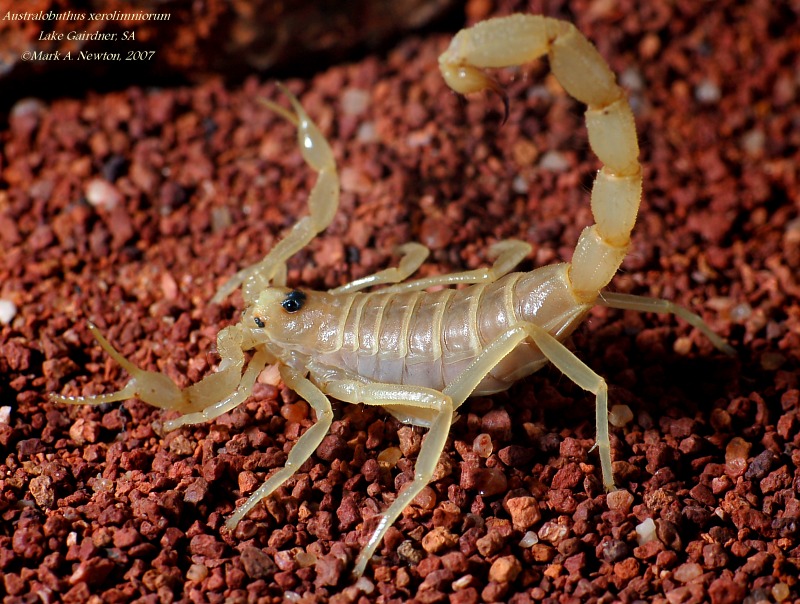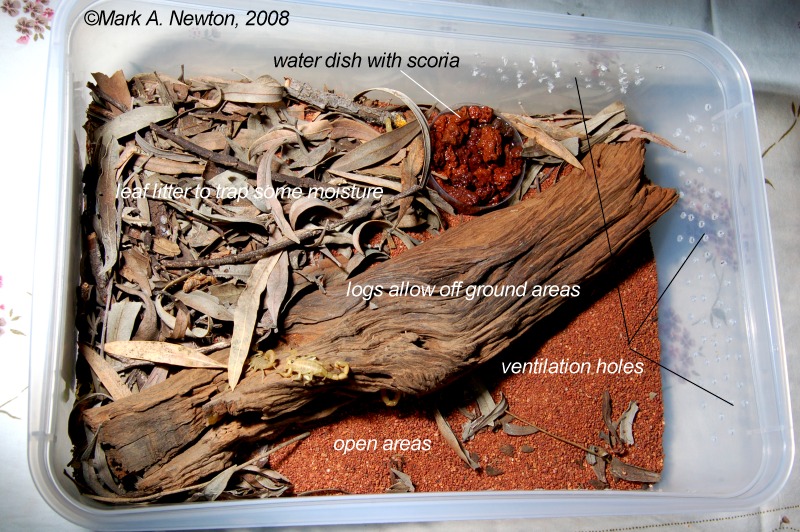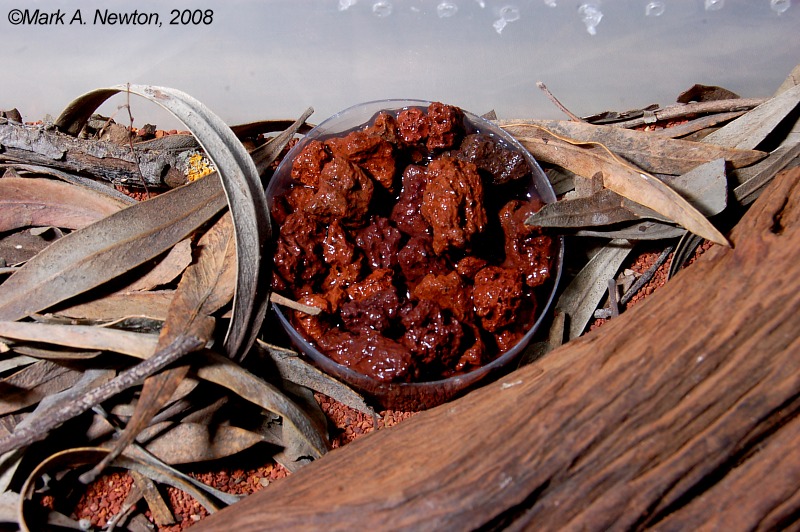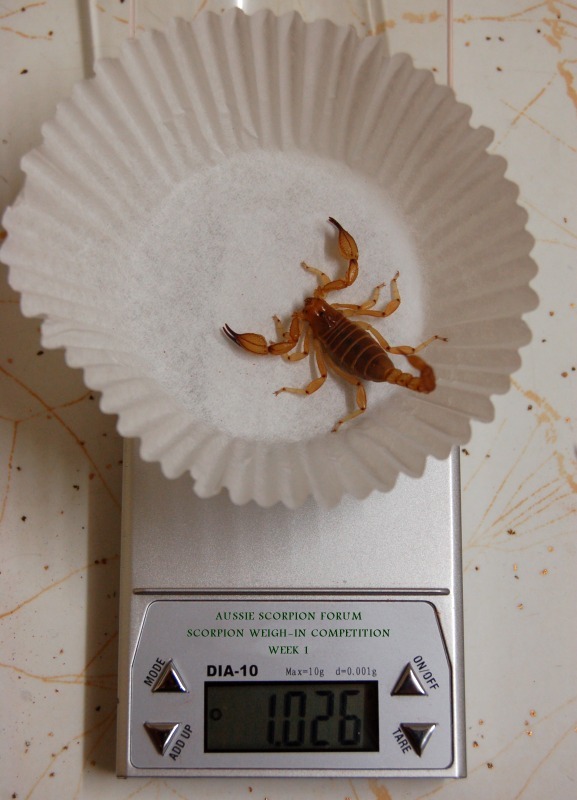Click on the banner to learn more about Australian Scorpions



This species is quite hardy in captivity due to its highly surface active foraging behaviour. The behaviour has enabled it to have a minimum evaporative water loss from its cuticle, which is a good thing for captivity.
Sexing: The sexes are almost identical, however, the male does have slightly longer pectines which protrude well beyond the trochanter-femoral joint of the 4th walking leg. Otherwise the female is often slightly larger and a little more robust.
How many in a tank: This is quite a communally tolerant species, in fact I have kept many together, even with gravid females and never witnessed cannibalism.....of course that doesnt mean it will never occur, keep them well fed.
Housing: Almost any size housing will do from small takeaway food size tubs to glass terrariums. Being a salt lake surface scorpion, they are not a very good climber, so I often dont use a lid on larger housing, or only use a partial lid to maintain good ventilation. Your housing needs to be generally dry. Use desert sand or similar purchased from a pet shop. Good ventilation is a must, so plenty of holes drilled into the side of one end only, or an open top. If establishing a linear hydration system only add a tiny amount of water every now and then to the hydrated end and keep the rest bone dry. Add leaf litter for refuge spots and logs for access to above ground areas. If possible always allow desert buthids access to refuges off ground.


Feeding: Feed adlib, and I suggest small items such as little crickets or flies purchased from a pet shop. Be aware of potential insecticides with any wild caught insects.
Weighing: This may seem a little extreme, but if you are really keen to keep your scorpion healthy you may wish to purchase a set of diamond scales accurate to 0.001g. They are quite cheap and readily available on ebay.com.au. They are a good insurance to make sure your scorpion is either maintaining or increasing its weight.

All information is İMark A. Newton
TheSpiralBurrow - the worlds most informative site on Australian Scorpions.